 NATURE POWER In the Spirit of an Okanagan Storyteller
NATURE POWER In the Spirit of an Okanagan Storyteller
Harry Robinson
Compiled and Edited by Wendy Wickwire
 Copyright 2004 Harry Robinson and Wendy Wickwire Talonbooks
Copyright 2004 Harry Robinson and Wendy Wickwire Talonbooks
P.O. Box 2076, Vancouver, British Columbia, Canada V6B 3S3
www.talonbooks.com On the cover: Harry Robinson with his wife, Matilda. Photo courtesy of Harry Robinson.
Photos of Okanagan landscape by Robert Semeniuk.
Cover design by Adam Swica First Printing: August 2004 No part of this book, covered by the copyright hereon, may be reproduced or used in any form or by any meansgraphic, electronic or mechanicalwithout prior permission of the publisher, except for excerpts in a review. Any request for photocopying of any part of this book shall be directed in writing to Access Copyright (The Canadian Copyright Licensing Agency), 1 Yonge Street, Suite 1900, Toronto, Ontario, Canada M5E 1E5; Tel.:(416) 868-1620; Fax:(416) 868-1621. Nature Power was originally published in 1992 by Douglas & McIntyre.  This book is dedicated to
This book is dedicated to
Harry Robinsons always-attentive
neighbour, Carrie Allison,
and to his around-the-clock caregivers
in his final years: Colleen, Diane,
Heather and Stella.CONTENTS Harry Robinson was a perfectionist.  This book is dedicated to
This book is dedicated to
Harry Robinsons always-attentive
neighbour, Carrie Allison,
and to his around-the-clock caregivers
in his final years: Colleen, Diane,
Heather and Stella.CONTENTS Harry Robinson was a perfectionist.
Whether sharpening his knives or keeping a record of births and deaths in his community, Harry carried out his tasks methodically and with great precision. It was his way. Knowing this about him, it was with some apprehension that I put the first copy of his long-awaited book, Write It on Your Heart, in my local Vancouver mailbox on November 1, 1989. With even greater nervousness, I approached his bedside in Keremeos a week later. Its all right, he said approvingly, except for one thing. Whats that? I asked.
You said you would put all my stories on a book, but youve left a lot out. For the next hour, we discussed the logistics of putting his words into print, especially the hundreds of thousands of words that had passed from his lips over many years onto my reel-to-reel tapes. It was just not possible to capture all of his words in one book! This bothered Harry, and so I promised him that day to do my best to get more of his stories into book form. Nature Power, a collection of Harrys stories about the spiritual relationship between humans and their nature helpers (shoo-MISH), is a partial fulfillment of that commitment. Unfortunately, I will never have the pleasure of presenting Nature Power to Harry. In the early morning hours of January 25, 1990, scarcely two months after that November visit, Harry died.
Harry had been frail and bedridden for some time, but his round-the-clock home-care workers, Colleen, Heather, Diane and Stella, had described him to me in my regular check-in calls as comfortable. In the third week of January, however, things changed. It started with an unusual pain in Harrys lower abdomen. Fearing that he might be forced to go into the hospitalan institution he hatedHarry kept his pain to himself. Only when it had become unbearable did he finally complain. An emergency X-ray undertaken at the local Keremeos health clinic on Wednesday morning revealed that his artificial hip had become dislodged, and by now it was badly infected.
Harry died early the next day in his own bed, surrounded by his photos, wall hangings and other precious pieces of memorabilia. His friends and relatives assembled at Chopaka for his funeral five days later. A great tree had fallen, taking with it roots that extended deep into the Okanagan earth. TWO WORLDS I first met Harry Robinson in August 1977 at his home just east of Hedley in the Similkameen Valley. On the surface, our two worlds could not have been more different. Harry was a seventy-six-year-old Okanagan Indian who had been raised in the traditional ways of his people by his mother, Arcell, and her parents, Louise and Joseph Newhmkin, at the small village of Chopaka in the Similkameen Valley.
A member of the Lower Similkameen Indian Band (one of five Okanagan bands in southwestern British Columbia), Harry spent his boyhood riding and tending horses, bringing in the cattle, fencing, haying, and visiting rodeos and stampedes. At the age of thirteen he began attending the local school at Cawston, but after five months of walking the six miles there and back, he quit and turned to ranching full-time. Harry married Matilda Johnny, also from Chopaka, in 1924. Although they had no children, they ran a very successful ranching business together. By the early 1970s, Matilda had died and Harry had become too old to run the ranch, so he sold it. Ranching was Harrys life.
Its kinde important words, he wrote to me, should be on book. I get to started feed stock from 2nd jan. 1917 till 1972. 50 years I feed cattle without missed a day in feeding season rain or shine. snowing or Blazirt. holirdays. funeral day. any other times I just got to feed cattle feeding seson in winter. from 115 days up to 185 days. just Depends in weather of winter to feed cattle every day. that is I Been doing for 50 winters that should worth to be on Book if is not too late.
some more I have done in my days. that is I Been doing for 50 winters that should worth to be on Book if is not too late.
some more I have done in my days.
I use to buy land and sell land Buy cattle and sell cattle. Buy horses and sell horses. Buy hay and sell hay. Even I buy dog but no sale for dog. No market. Later on I Buy machinery, one tracto[r] at a time.
Big one and one small. 2 tractors. one farmhand Power hay mower side rack. I put up 120 to 150 tones of hay all by my self. alone with that machinery in 34 weeks. But before I have that machinery I could have 67 mans working for me to put up 150 tons of hay in 45 weeks but later on I have to sell the machinery one by one at a time till I have it all soled.
At one time for a while I have 3 home neer Ashnola just about mile an half aprt and was another home and hay land neer Chopaka. Because I buy place with house and barn and everything and sometimes I sell it same way. House Barn corral everything now by then I have 3 place to work in upper part and one down below, that 30 miles away from this other 3 place is but I work in all 4 place in all year round some times I have a hiert man one or two some times all by my self. (Letter, May 15, 1985) When I met Harry, Matilda had been dead for about ten years. Alone in his rented bungalow beside the main highway, he had no close neighbours, other than his landlords and good friends Slim and Carrie Allison. In addition to our fifty-year age difference (I was twenty-seven), I had been raised on the other side of the continent, in small-town Nova Scotia.
Growing up in a professional family of Anglo-Scottish ancestry, I had spent the better part of my life in school. But my formal education, especially a degree in music at an Ontario university, had left me cold. The oral music-making with which I had grown upguitars, fiddles, banjos, accordians and pianos played by ear in most householdshad no place here. Indeed, playing by ear was frowned upon. And so-called world music, such as the Indonesian gamelan, West African drumming or South Indian percussion, was scarcely mentioned. This vision of culture needed rethinking, and in 1975 I switched to anthropology and ethnomusicology.
Next page
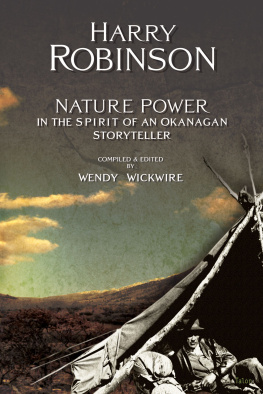
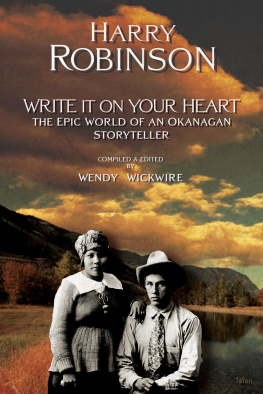

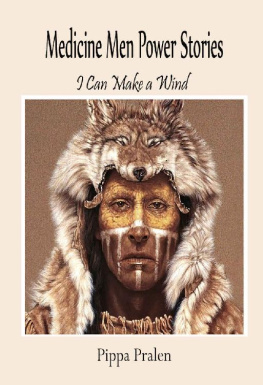
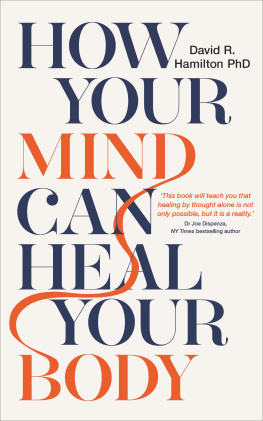

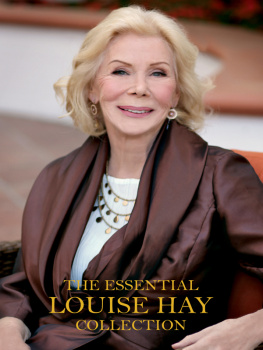
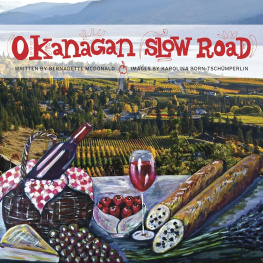

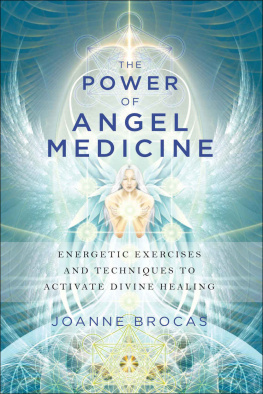

 NATURE POWER In the Spirit of an Okanagan Storyteller
NATURE POWER In the Spirit of an Okanagan Storyteller Copyright 2004 Harry Robinson and Wendy Wickwire Talonbooks
Copyright 2004 Harry Robinson and Wendy Wickwire Talonbooks This book is dedicated to
This book is dedicated to